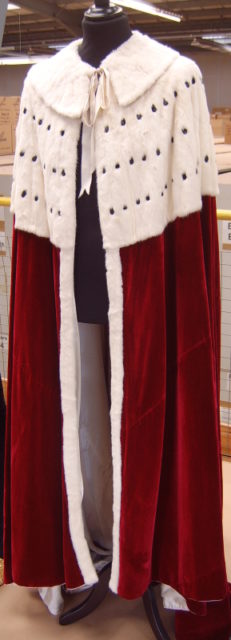In Norse society, there were three distinct classes. At the time the three classes weren’t as rigid as they were in similar class-based societies elsewhere in Europe, and you could move from one to the other – not necessarily easily, but the chance was there to better yourself.
The Norse culture itself was spread across Scandinavia, and most of the clearest records of this time exist in Iceland due to its high literacy rate during this period. Even though there are three distinct classes, as with any complex society there were subclasses within them, and things also varied country to country.
3.The Thrall or Slave

At the bottom of the classes was the thrall, also known as þræll in Old Norse. These were the bondsmen and the slaves captured during raids. If you couldn’t pay your debts, you were obliged to become a bondsman and work off your debt. If you were a slave you had very few rights; however, you could save up and buy your freedom. Slaves, when they became too sick or old to work anymore, were simply put to death. If a slave was freed, he was classed as a freeman but still had a very low status. The taint of slavery was impossible to outlive, but in Iceland, a freed slave’s children were completely free of stigma. In Norway, though, it took four generations before a freed slave’s child was thought of as free. Many of the slaves came from Baltic countries and were gathered during raids there.
They were essential for running a farm – in Norway, three slaves was the minimum number needed to run a small farm with only a dozen cows and a couple of horses. In Norse society, slaves worked alongside hired workers; there were no farms where slaves did all the work, but they did do the hardest of the work. At perhaps the same level as the thrall were the paupers and vagrants who, though they were freemen, lacked a residence of their own. If you were this poor, you weren’t allowed to marry in Iceland.
2.The Karls – Freemen and Land Owners

The majority of people in Norse society were in this class. These were the freemen and land owners. Within this class, there were further levels of hierarchy, with the local chieftains supported by the freemen. The chieftain who lost the support of his freemen often lost his role, and his position would be available for whoever else wanted it. The freemen who owned land were next down in the hierarchy; your power in this area came from the size and wealth of your lands. Some farmers were powerful due to family ties with other powerful farmers. It was an ever-changing and complex system. The freemen enjoyed some rights that weren’t available in other European cultures at the time, such as freedom of speech and the right to bear arms. Merchants were also freemen even though they didn’t own land.
Many freemen actually did not own land, due to the lack of availability, so there were farmhands, servant-women, fishermen, and, in some of the countries outside of Iceland, some freemen were just tenants and rented.
1.The Jarls – Kings and earls

Jarls were kings or earls, and not every Norse country had them. Iceland did not. In early Norse history the Jarls were regional, but over time as they expanded and consolidated power they grew to be national leaders. The role of Jarl could be hereditary or bequeathed by a military leader. They were not revered, as the British did their kings, but they were considered their most able and strongest of men. The Norse King was a generous man with food, clothing, and weapons. He had to be a good leader and be crafty, daring, and hard. He was expected to fight beside his people. A Norse King was a good public speaker who was able to inspire his men, About Education reported.
By excelling, a freeman could reasonably aspire to become a Jarl, and just as easily misfortunes and mismanagement of their lives could make a freeman a thrall. It was a hard life in Scandinavia in the Norse culture, but it could also be very rewarding.
